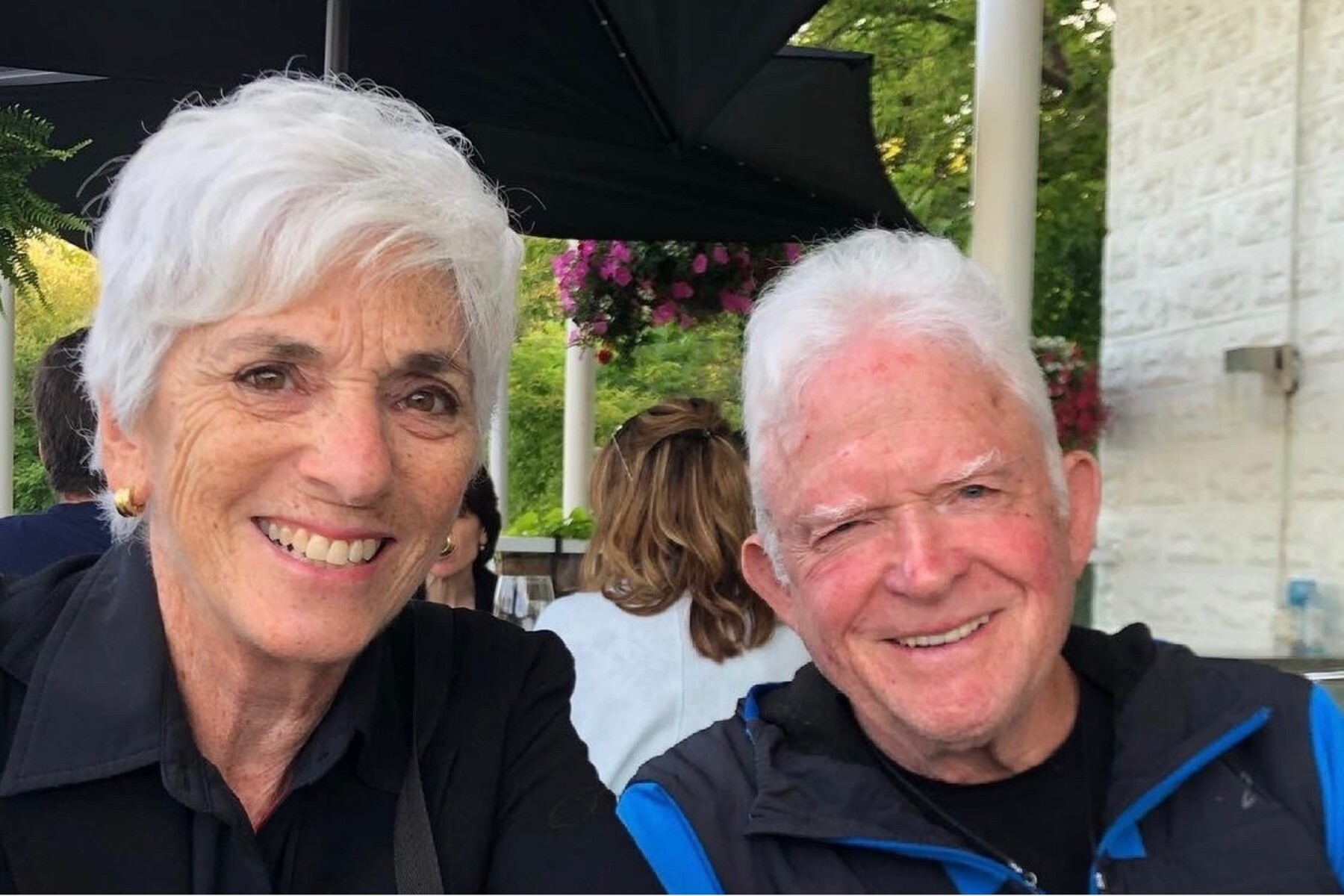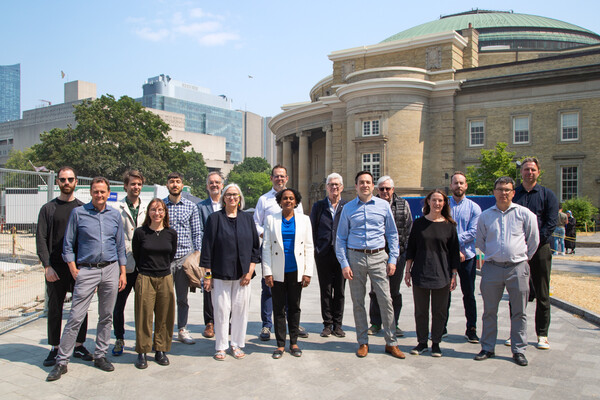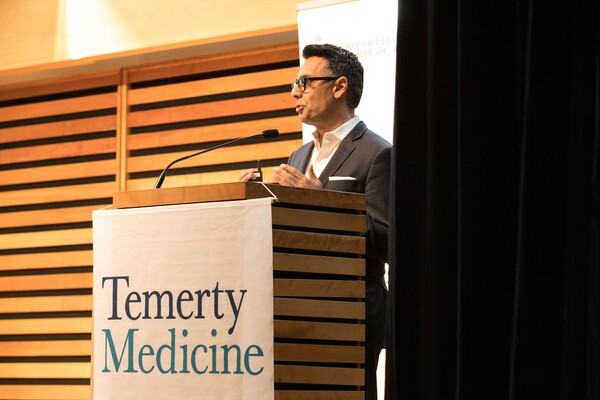Main Second Level Navigation
Breadcrumbs
- Home
- News & Events
- Recent News
- Getting to the Heart of Sudden Cardiac Death in Young People
Getting to the Heart of Sudden Cardiac Death in Young People

It’s a parent’s worst nightmare: their seemingly healthy child is happily playing, when they suddenly collapse and are unable to be revived.
“We think of sudden cardiac death as something that only happens to older individuals with coronary artery disease, but fatal arrhythmias also occur in otherwise healthy young people,” says Dr. Michael Gollob, an associate professor in the Temerty Faculty of Medicine’s Department of Physiology and the research director of Toronto General Hospital’s Inherited Arrhythmia and Cardiomyopathy Program.
Compounding these tragic losses, he explains, is that at-risk children and adolescents often show no obvious warning signs — their sudden death can be the first manifestation that something is wrong. And even then the reason for their passing is often left shrouded in mystery.
“We now believe these conditions may be the cause of a purely electrical phenomenon, brought about by a genetic abnormality,” says Gollob. “It’s something we have only really begun to understand and investigate relatively recently, since neither of these contributing factors can be identified through a traditional autopsy.”
Gollob and his team of researchers have made it their mission to better understand the underlying genetic causes of inherited arrythmia conditions. Each year, they see more than 300 families from across Ontario who are considered at-risk for these syndromes due to their families’ medical histories. Using a unique combination of clinical and genetic testing, they are able to identify an underlying genetic cause in about 20 per cent of families.
“Our goal is to find answers for the remaining 80 per cent of families — some of whom have experienced the sudden loss of multiple young members over one or more generations,” says Gollob. “It can cause tremendous anxiety.”
“With every step in our journey to better understand the genetic causes of these inherited conditions, we’re getting closer to finding new ways to treat or even prevent them from occurring through novel drug or gene therapies. That’s our ultimate objective — to be able to identify the risk and intervene early, so future families don’t experience these tragedies.”
In their search, Gollob and his colleagues have turned to cutting-edge whole exome and genome sequencing to analyze all genes in their patients and their family members — comparing their genetic data to large cohorts of presumably healthy individuals. Once a culprit is identified, they then study the gene and its proteins to better understand how they impact heart physiology.
While Gollob’s lab has made many important discoveries, including finding genes responsible for atrial fibrillation, Short QT Syndrome and Idiopathic Ventricular Fibrillation, he and his colleagues know their work is far from over.
“With every step in our journey to better understand the genetic causes of these inherited conditions, we’re getting closer to finding new ways to treat or even prevent them from occurring through novel drug or gene therapies,” says Gollob. “That’s our ultimate objective — to be able to identify the risk and intervene early, so future families don’t experience these tragedies.”

What's Next: One Family's Support
It’s this ambitious research translation goal that recently led to an unexpected gift from one of Gollob’s traditional cardiology patients.
Retired lawyer Michael Sax is an avid cyclist and alpine skier who was occasionally left feeling near faint after exercise. He regularly saw a family doctor and cardiologist and had frequent echo and stress tests, as well as a few angiograms. Initially, his condition was suspected of being tied to cardiovascular disease that could be treated through medication and frequent monitoring. Then a particularly scary moment last fall led to the uncovering of Michael’s condition’s electro-physiological origins.
“I was comfortably climbing a hill on my bike up in the Meaford area ,” says Michael. “A half hour later, while I was descending and talking with a friend, my heart rate suddenly went up to 217 beats per minute.”
Michael reported the incident to his cardiologist, Dr. Zion Sasson, an associate professor in Temerty Medicine’s Department of Medicine and the director of Mount Sinai Hospital’s Echocardiography and Stress Echocardiography Laboratory. Sasson had Michael wear a 14-day Holter monitor but, initially, nothing was caught.
“I continued to update Dr. Sasson on how I felt and sent him ECGs I took through my smartwatch,” says Michael. “He asked me to wear the monitor a second time and right before the Christmas holidays it recorded several more incidents. When Dr. Sasson saw the results, he contacted me immediately and told me to get to Mount Sinai, where I was admitted right away. That may have saved my life!”
Michael’s medical team determined the best way to manage his condition would be through an implantable cardiac device or ICD — a battery-powered device placed under the skin that tracks a patient’s heart rate and can deliver an electronic shock to the heart when an abnormal cardiac rhythm occurs.
By a twist of fate, Gollob was the cardiologist assigned to surgically implant Michael’s ICD at Toronto General Hospital.
“At my first follow-up appointment after the surgery, Dr. Gollob mentioned his ‘day job’ looking into sudden cardiac deaths in children,” says Michael. “It reminded me of an incident that occurred when I was about 12 or 13 years old. I was playing football on the street with a group of neighbourhood kids. One kid went inside after playing for a while. Within a few hours, a morgue truck pulled up in front of his house. He had suddenly died. I had completely forgotten about it over time but, sure enough, I had witnessed what was likely the very same kind of thing Dr. Gollob was trying to stop from happening.”
Julia Sax, Michael’s wife, also notes her family’s personal experience with the death of a child.
“When I was growing up, I lost a baby cousin to Sudden Infant Death Syndrome,” says Julia. “I know what the unexpected death of a young person can mean to a family. It’s an unimaginable tragedy and so very, very frightening. Hearing Dr. Gollob talk about the experiences of the families in his clinic, you can’t help but be moved and want to help.”
This gift allows us to show appreciation for Dr. Gollob and the care I received from him, while also helping him help other families. If this gift can contribute to new therapies and treatments — if it can improve the lives of others — that will be incredibly meaningful for us.”
And help is just what Michael and Julia were inspired to do. Together, they have made a generous commitment to establish The Sax Family Fund at the University of Toronto in support of Dr. Gollob’s scientific research. And, as they prepare to celebrate a milestone birthday and wedding anniversary, they are hoping their family and friends will consider joining them in their support for this work.
“When my heart issues ramped up, it really helped put things in perspective for us,” says Michael. “Success is being able to pay it forward to others. This gift allows us to show appreciation for Dr. Gollob and the care I received from him, while also helping him help other families. If this gift can contribute to new therapies and treatments — if it can improve the lives of others — that will be incredibly meaningful for us.”
“I’m so grateful to Michael and Julia for their support of our research,” says Gollob. “As scientists, we are greatly dependent on generous philanthropy to achieve our research. The Sax family’s gift will be a tremendous resource to my team and our work.”
News


